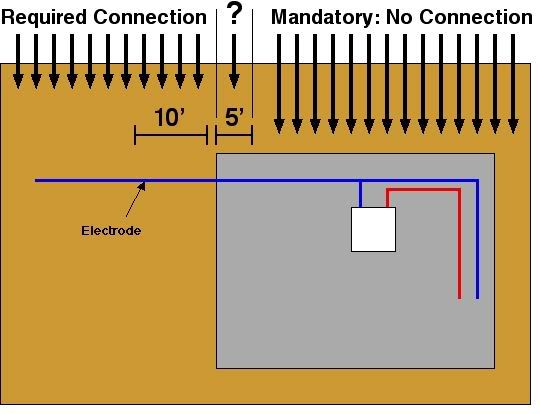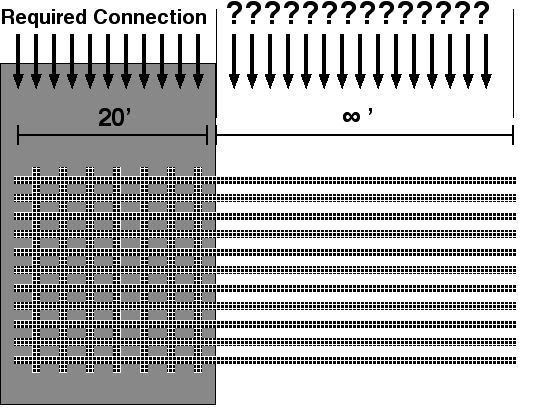Re: Ground Conductor Splicing
I was asked to look into this thread, and to offer an opinion. It is not an easy thread to follow. I will admit that I am not certain where the opposing sides are claiming to hold the "truth" that the other side is missing. Let me see if I can reconstruct the opposing claims, without going into the supporting arguments.
I think the original question has to do with #4 copper wire, and not rebar, being encased in concrete. For clarity, I think that George was suggesting that there might be two cases:
</font>
- <font size="2" face="Verdana, Helvetica, sans-serif">CASE 1 There is a length of wire, of which 20 feet is in concrete, and of which the remaining length is not long enough to reach the service.</font>
<font size="2" face="Verdana, Helvetica, sans-serif"></font>
- <font size="2" face="Verdana, Helvetica, sans-serif">CASE 2 There is one #4 copper wire, 20 feet long, encased in concrete. There is a second #4 copper wire, attached to the first wire somewhere within the concrete. It is this second wire that not long enough to reach the service.</font>
<font size="2" face="Verdana, Helvetica, sans-serif">
George: You started with this:
Originally posted by georgestolz: If the #4 in question is the electrode, then run a GEC sized according to 250.66 to an accessible location and splice the electrode to the GEC using any reversible method.
I think you are saying that this is permitted to be a "CASE 1" installation. You are saying that the wire we have in our hands, the wire we know is not long enough to reach the service, can be a part of the grounding electrode, and can be connected to a separate wire. That separate wire would be a GEC, and you can connect it using the split bolt that the OP originally asked about.
Bob (iwire): I think you are saying that,
</font>
- <font size="2" face="Verdana, Helvetica, sans-serif">It would not matter if the construction had been done in the CASE 1 or the CASE 2 configuration, and</font>
<font size="2" face="Verdana, Helvetica, sans-serif"></font>
- <font size="2" face="Verdana, Helvetica, sans-serif">Once the conductor (i.e., #4 copper wire or rebar) had left the concrete, that portion that is outside the concrete is not part of the "electrode," so therefore,</font>
<font size="2" face="Verdana, Helvetica, sans-serif"></font>
- <font size="2" face="Verdana, Helvetica, sans-serif">Any connection outside the concrete cannot be treated as though it were a connection to an electrode.</font>
<font size="2" face="Verdana, Helvetica, sans-serif">
George: You counter with the water pipe example, in which we can connect a wire to a pipe inside a building. Your point is that, even though the connection is not in an area surrounded by dirt, the wire is a called a GEC, and the pipe is called an "electrode."
Bob: You counter by saying the concrete encased electrode and the water pipe are sufficiently different from each other to preclude using the one to demonstrate the viability of the other.
I also notice that there is some confusion regarding what to do with a concrete encased electrode that consists of 20 feet of encased rebar with some additional length of rebar sticking out of the concrete. The issue is what to call, and how to treat, the part of rebar sticking out of the concrete. Is it part of the electrode? Is it a GEC?
Before I give my opinion on the debate, can either of you or anyone else confirm or refute whether I have accurately summed up the essence of the disagreement?



